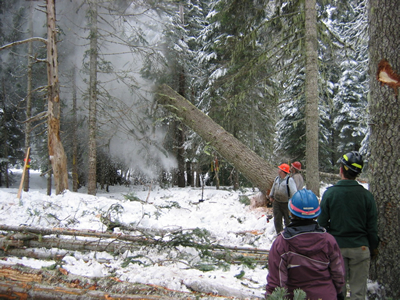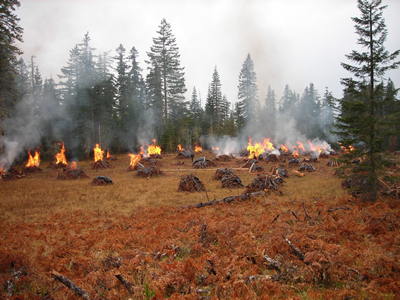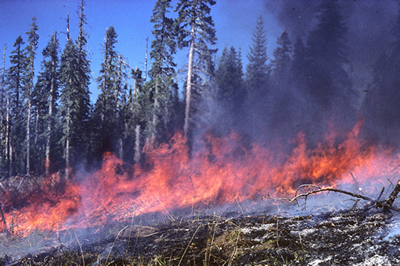The
centerpiece of our research program is an experiment that explores
the potential for restoring meadows through tree removal and prescribed
burning. It addresses the following questions:
- Is tree removal sufficient to promote the abundance or diversity
of native meadow species? Are there additional ecological benefits
of fire?
- Are there adverse effects of fuel-reduction methods (broadcast-
or pile-burning) on
- Soil properties?
- Establishment of undesirable species?
- Does the duration of tree influence (over decades to centuries)
affect the potential for restoration of meadow vegetation?
| Halpern,
C. B., R. D. Haugo, J. A. Antos, S. S. Kaas, and A. L. Kilanowski.
2012. Grassland restoration with and without fire:
evidence from a tree-removal experiment. Ecological Applications
22:425-441. PDF. Appendices |
|
| Experimental
tree removal and prescribed burning |
 |
| Bunchgrass
Ridge, on 29 Sep 2006, one day after broadcast burning
of experimental plots (areas with white ash). |
|
|
|
![]()
![]()
![]()
![]()



